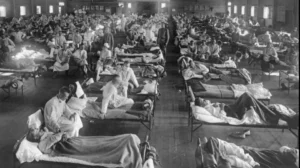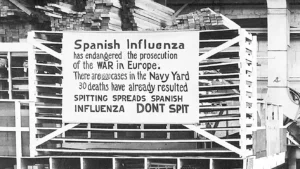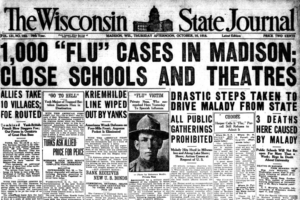In the tumultuous year of 1918, a devastating global pandemic known as the Spanish Influenza swept across the world, leaving no region untouched. Often overlooked are the remote Pacific islands, where the impacts of this deadly virus were profound, illustrating the virus’s global reach and unraveling its impact on these isolated communities. In this article, we will journey into the heart of the Pacific to explore how the Spanish Influenza affected these remote islands and examine the consequences on their societies.



The Arrival:
As World War I raged on, so did the relentless spread of the Spanish Influenza. Initially, the Pacific islands seemed distant from the chaos, but the highly contagious nature of the virus eventually reached these remote shores. Ships carrying soldiers, sailors, and supplies played a pivotal role in transmitting the disease to these previously unscathed communities. The arrival of the influenza in the Pacific sparked a severe health crisis, catching the inhabitants largely unprepared.
Impact on Remote Pacific Islands:
The impact of the Spanish Influenza on the remote Pacific islands was nothing short of catastrophic. These close-knit communities, with their small populations and limited access to medical assistance, faced a daunting challenge. Often isolated from the world by vast stretches of ocean, these islands struggled to contain the rapidly spreading virus and its devastating consequences.
1. Societal Disruption:
The Spanish Influenza mercilessly disrupted the daily lives of the islanders, causing significant social upheaval. Owing to the scarcity of healthcare resources and knowledge about the disease, the Pacific islands were ill-prepared to cope with such a formidable health crisis. Countless island residents fell ill, overwhelming the limited medical facilities available and causing a breakdown in societal structures and traditional practices.
2. High Mortality Rates:
The Spanish Influenza outbreak in the Pacific had dire effects on the islands’ population. With limited medical interventions and inadequate treatments, the virus claimed significant numbers of lives, leading to soaring mortality rates. The loss of community leaders, elders, and skilled workers resulted in severe social and economic repercussions, further exacerbating the challenges faced by these Pacific island societies.
3. Disrupted Economy:
The Pacific islands primarily relied on subsistence farming and fishing, keeping their economies interwoven with their natural surroundings. However, the Spanish Influenza outbreak severely disrupted these economic activities, as labor shortages and widespread illness hindered their ability to sustain their traditional ways of life. This created long-lasting impacts that extended beyond the pandemic itself.
Learning and Adapting:
Despite the immense challenges posed by the Spanish Influenza, Pacific island communities displayed notable resilience and adaptability. Local traditional healers, resourceful individuals, and missionaries played a crucial role in providing care and support to those affected. These communities formed connections and exchanged information with neighboring islands, sharing knowledge to prevent further outbreak and protect themselves against the pandemic’s devastation.
Conclusion:
The 1918 Spanish Influenza pandemic was a global catastrophe that reached even the most far-flung corners of the Pacific islands. The impact of the virus on these remote communities was profound, disrupting societies, devastating populations, and challenging their way of life. However, the resilience and ingenuity exhibited by these Pacific islanders during this tumultuous time stand as a testament to their strength and ability to overcome adversity. The Spanish Influenza in the Pacific is a stark reminder of the virus’s global reach, showcasing both the interconnectedness of our world and the indomitable spirit of humanity.

